The Frank Stella You Thought You Knew
You may know Frank Stella from the brightly colored, shaped canvas paintings in his Protractor series from the late 1960s to early 1970s. However,...
Marva Becker 11 July 2024
On February 12, 2018, the official portraits of former US president Barack Obama and first lady Michelle were unveiled. They are the latest additions to the collection of the Smithsonian National Portrait Gallery in Washington, DC, which houses multiple portraits of 44 former US presidents. They range from a famous, classic-style rendition of George Washington by Gilbert Charles Stuart to a pixelated, mosaic-like portrait of Bill Clinton by Chuck Close. The event of adding new work to the collection rarely sparks a lot of media attention. The majority of the works are prim and proper portraits that a contemporary art museum probably wouldn’t care to acquire (just look at Jimmy Carter or George Bush). However this was not the case for Barack and Michelle Obama, who chose two artists for whom dullness is the utmost insult.
Former US president Obama selected Kehinde Wiley for his portrait. This artist is known for naturalistic portraits of African Americans. Inspired by Old Master paintings, he arranges his models in poses resembling the masterpieces of Titian, Peter Paul Rubens, Giovanni Battista Tiepolo, and Jacques-Louis David. He blends these classical references with colorful, wallpaper-like patterns in the background, resembling West African style fabrics or Arts and Crafts Movement designs. The subjects of the paintings are usually ordinary men and women Wiley meets in the street. The fusion of classical references and African American models is the artist’s commentary on the position of black people in contemporary American society. This is precisely what enticed Barack Obama to choose Wiley as the author of his portrait. At the official unveiling, Barack Obama said:
What I was always struck by when I saw his portraits was the degree to which they challenged our ideas of power and privilege.
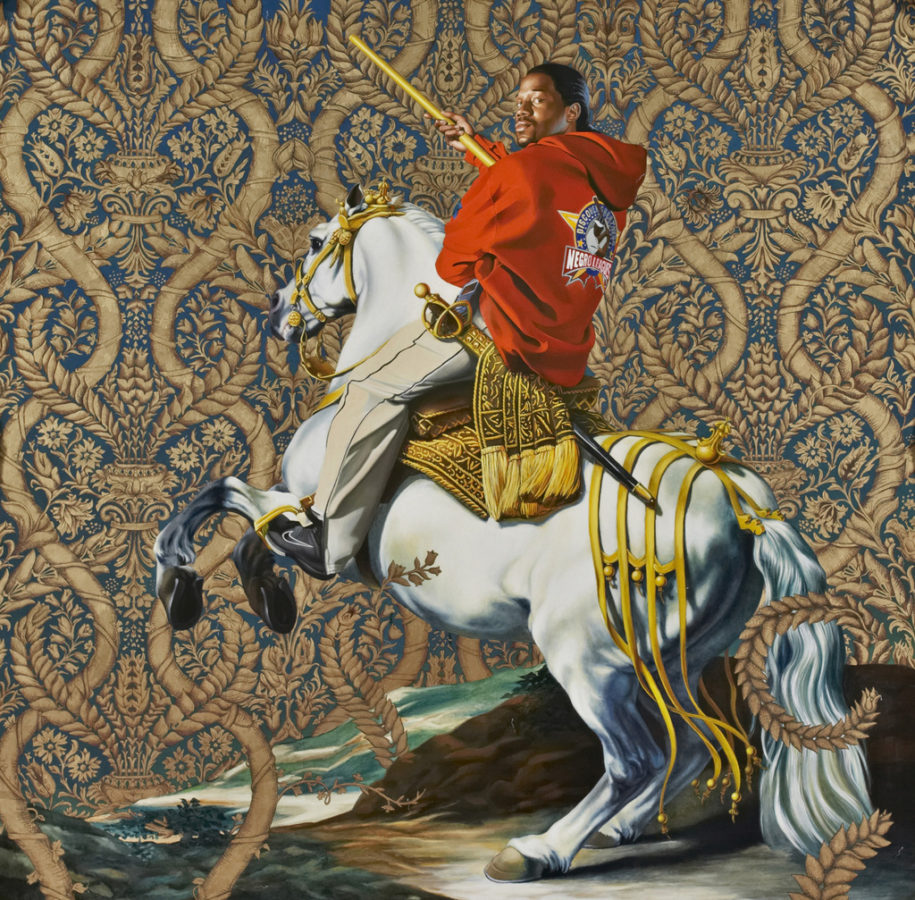
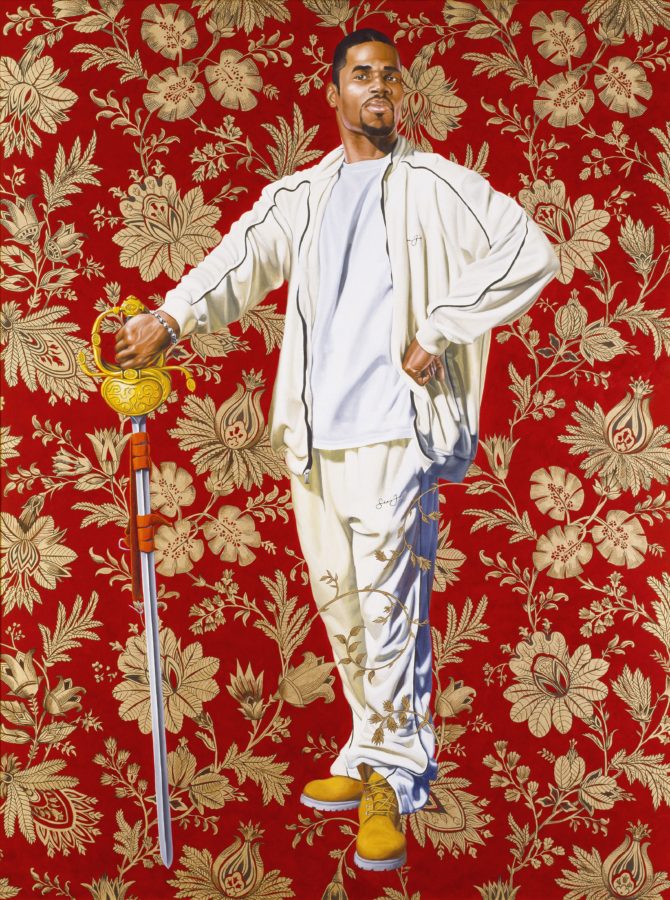
Unlike his predecessors in the art of presidential portraiture, Wiley did not present his subject in a neutral and blunt pose. Certainly, Obama’s posture makes a distinctive political statement. The President sits on a throne-like chair in a black suit, leaning forward with elbows on his knees. With a focused, solemn look on his face, he looks like a careful observer of what is happening in his country a year after he left office. In contrast to this political reference, the background of the work is filled with personal symbols. The sitter is nearly devoured by a mass of greenery interwoven with flowers that carry symbolic meanings. For instance, African lilies stand for Kenya where Obama’s father was born. Jasmine is a symbol of Hawaii, the birthplace of the President. Chrysanthemums represent Chicago, the cradle of his political career.
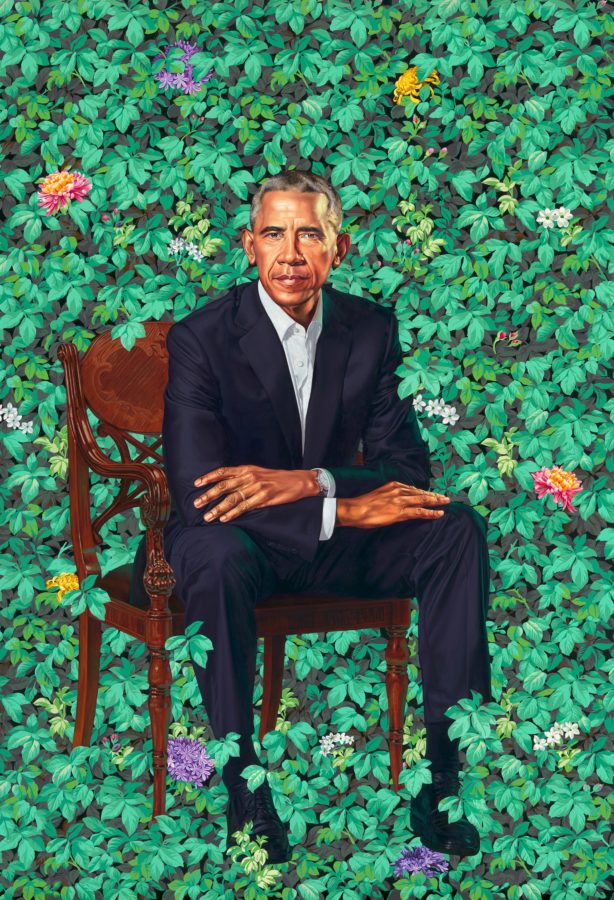
While the critics praise Wiley’s work for being distant from previous presidential portraits, some still find it too dull and remote to be considered valuable by the next generations of viewers. Meanwhile Michelle Obama’s official portrait has been universally applauded as an extraordinary work, definitely outperforming Wiley’s painting. The first lady was painted by Amy Sherald, an artist known for giving her African American (and mostly female) subjects grey-toned skin. Her works thereby question the importance of race and address issues of social justice. The figures are set against a monochrome background which makes them look monumental and dignified. Moreover, they draw the viewers’ full attention because the sitters frequently hold unusual props (giant cups, puppets, or horse heads, to name a few) or wear colorful outfits with geometric patterns.
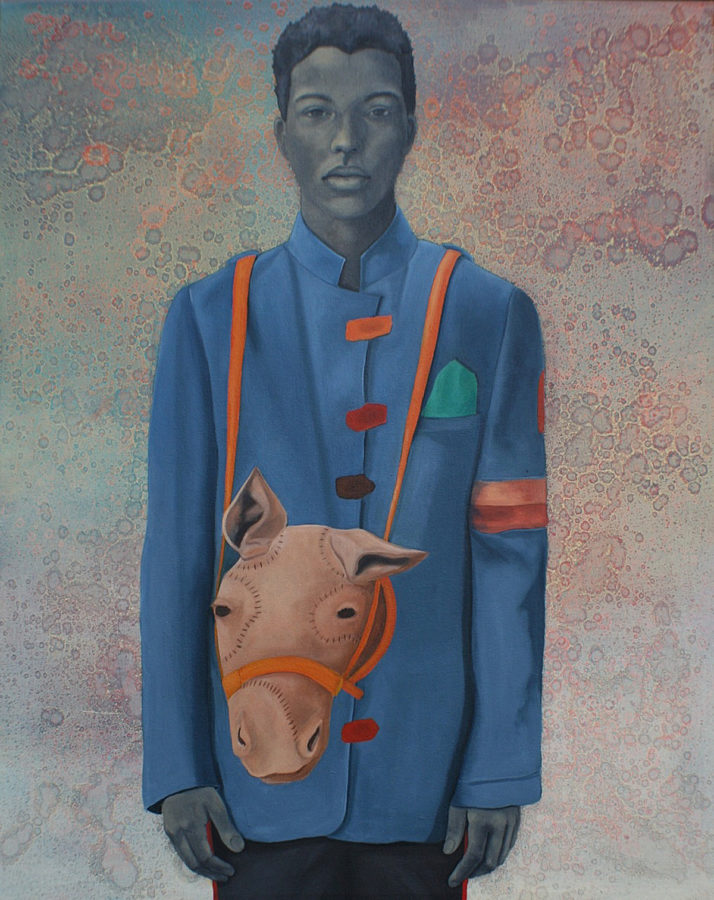

Sherald depicted Michelle Obama against a light blue background, sitting with her chin resting on her hand. In addition, her long, wide dress strengthens the impression of a triangular composition, with her head being the peak of the pyramid. However, the look on Obama’s face is not as solemn as her husband’s. Her encouraging smile seems to convey the message that the former first lady voiced during the unveiling of the portrait:
[girls of color] will see an image of someone who looks like them hanging on the walls of this great American institution … And I know the kind of impact that will have on their lives because I was one of those girls.
Obama wears a captivating dress with an abstract pattern which brings to mind Gustav Klimt’s portraits, notably Adele Bloch-Bauer I. Aditionally, the gown itself, designed by Michelle Smith, tells a story. Smith describes the design as an expression of a “desire for equality, equality in human rights, racial equality, LGBTQ equality”. The geometric details symbolize a “feeling of being held back. . . that we’re not quite there yet”.
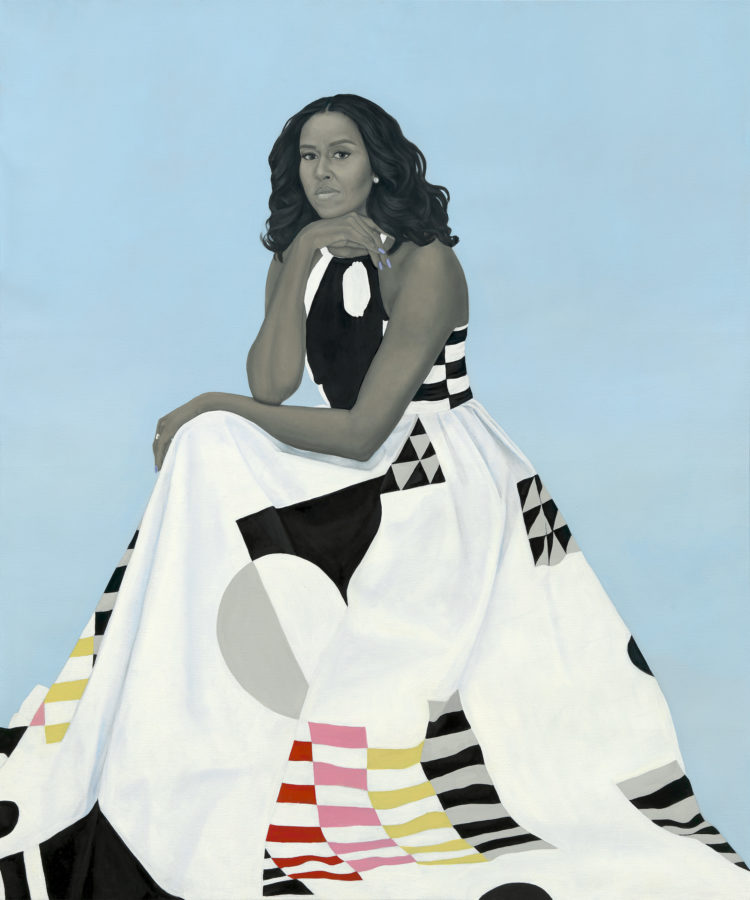
Interestingly the Obamas’ official portraits have found acclaim not only among critics. Two-year-old Parker Curry was so mesmerized by Sherald’s work that she refused to stop staring at it. After a video made in the Smithsonian by the girl’s mother went viral, Michelle Obama herself met the girl. They even shared a little dance together.
DailyArt Magazine needs your support. Every contribution, however big or small, is very valuable for our future. Thanks to it, we will be able to sustain and grow the Magazine. Thank you for your help!